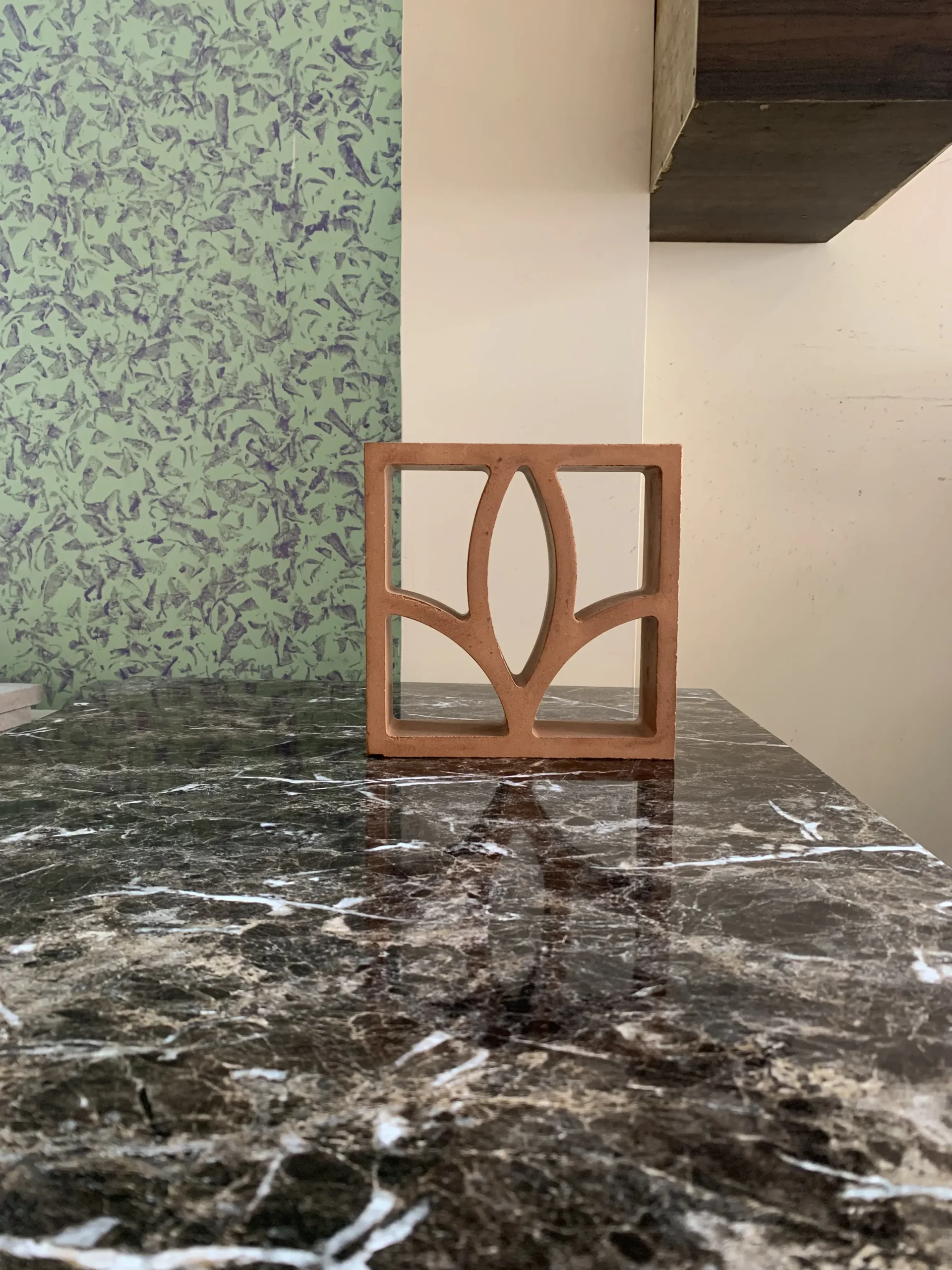Clay Jali
Products
Trust the Experience Of Our Clay Jali Products

Clay Jali
Size: 300x200x150

Clay Jali
Size: 300x150x75

Clay Jali
Size: 300x150x100

Clay Jali
Size: 300x150x100

Clay Jali
Size: 300x200x100

Clay Jali
Size: 400x200x150
Clay Jali: Embracing Tradition in Modern Architecture
When we think about architectural elements that marry artistry with functionality, clay jali stands out as a timeless choice. Known for its intricate designs and practical benefits, clay jali brings a unique charm to both traditional and contemporary structures. Let’s explore the essence of clay jali, its historical significance, benefits, and modern applications, and how it continues to shape the architectural landscape.
A Glimpse into the History of Clay Jali
The term jali originates from Persian, meaning “net” or “lattice.” Traditionally, clay jali was crafted by skilled artisans who molded and baked clay to create stunning, perforated panels. These panels were commonly used in Indian and Islamic architecture, serving both aesthetic and functional purposes.
The beauty of clay jali lies in its intricate patterns, often inspired by nature, geometry, or cultural motifs. Historically, these screens adorned palaces, mosques, and residential buildings, providing a blend of beauty, privacy, and ventilation.
Today, clay jali continues to be celebrated, bridging the gap between ancient craftsmanship and modern design.
Benefits of Clay Jali
The appeal of clay jali extends beyond its decorative aspects. Here’s why it has remained a popular choice in architectural design:
1. Natural Ventilation
One of the primary benefits of clay jali is its ability to facilitate airflow. The perforations allow for excellent ventilation, making spaces cooler and more comfortable. This is especially advantageous in warmer climates, where effective airflow can reduce reliance on artificial cooling systems.
2. Aesthetic Appeal
With its handcrafted nature, clay jali offers an artisanal charm that mass-produced materials often lack. Each piece is unique, showcasing intricate designs that enhance the beauty of any space. From classic to contemporary, clay jali can be customized to fit various architectural styles.
3. Privacy Without Isolation
In urban environments where space is limited, maintaining privacy is essential. Clay jali provides a semi-transparent barrier that offers privacy without completely enclosing a space. This balance of openness and seclusion makes it ideal for gardens, patios, and interior partitions.
4. Sustainability
Clay is a natural material that can be sourced sustainably. Its use in construction aligns with eco-friendly building practices, as it reduces the carbon footprint associated with manufacturing synthetic materials. Moreover, clay jali is biodegradable and contributes to a healthier environment.
5. Thermal Insulation
Clay jali offers excellent thermal properties. The porous nature of clay helps regulate indoor temperatures by keeping spaces cooler in the summer and warmer in the winter. This natural insulation can lead to energy savings in heating and cooling costs.
Modern Applications of Clay Jali
As architects and designers embrace the versatility of clay jali, it finds its way into various contemporary applications. Here’s how clay jali is redefining modern architecture:
1. Facade Designs
In modern buildings, clay jali is increasingly used in facade design. These intricate screens not only add aesthetic value but also enhance the building’s energy efficiency by controlling the amount of sunlight that enters the interior. The dynamic interplay of light and shadow created by clay jali elevates the overall architectural expression.
2. Indoor Dividers
In open-concept spaces, clay jali serves as stylish room dividers. Its ability to maintain airflow and light flow while providing a sense of separation makes it an excellent choice for homes and offices alike.
3. Garden Features
Clay jali is perfect for outdoor applications, such as garden walls and screens. Its porous design allows plants to grow through the gaps, creating a beautiful synergy between architecture and nature. These features provide privacy while enhancing the garden’s aesthetic appeal.
4. Cultural and Religious Spaces
Many cultural and religious buildings incorporate clay jali for its historical significance and symbolic meaning. The intricate designs often reflect cultural narratives and traditions, making it a powerful architectural choice in places of worship and community centers.
5. Decorative Accents
Clay jali can also be used as decorative accents in furniture, lighting fixtures, and wall art. Its artistic designs add a touch of elegance and warmth to interiors, making it a favorite among designers looking to create unique spaces.
The Future of Clay Jali in Architecture
With a growing emphasis on sustainability and eco-friendly materials, clay jali is set to regain prominence in architectural design. As architects experiment with innovative designs and techniques, the possibilities for clay jali are expanding. Advances in production methods, such as 3D printing, are also paving the way for even more intricate and customized designs.
Conclusion: Celebrating the Beauty of Clay Jali
Clay jali is more than just an architectural element; it’s a celebration of craftsmanship, tradition, and modernity. By merging beauty with functionality, clay jali enhances the aesthetic and practical aspects of any space.
As we move toward a more sustainable future in architecture, clay jali remains a timeless choice that respects cultural heritage while embracing contemporary design. Whether in residential, commercial, or public spaces, clay jali is poised to continue its legacy as a beloved architectural feature.
Call Us For more Info
Scheduling An Appointment
Trust the Experience Of Our Jali blocks Products
